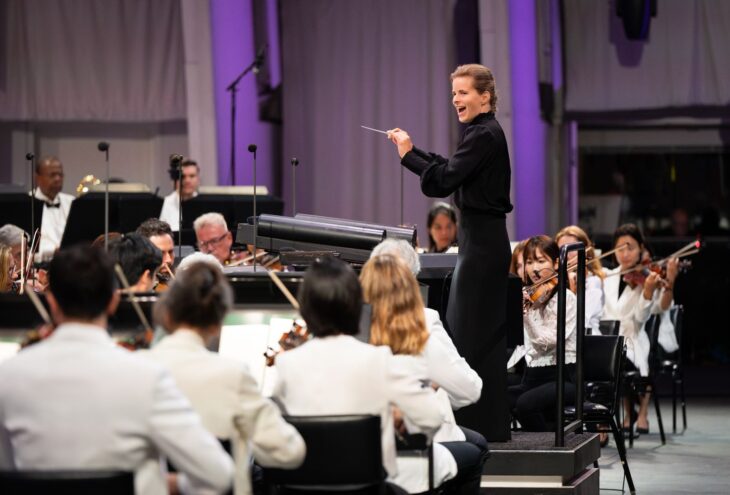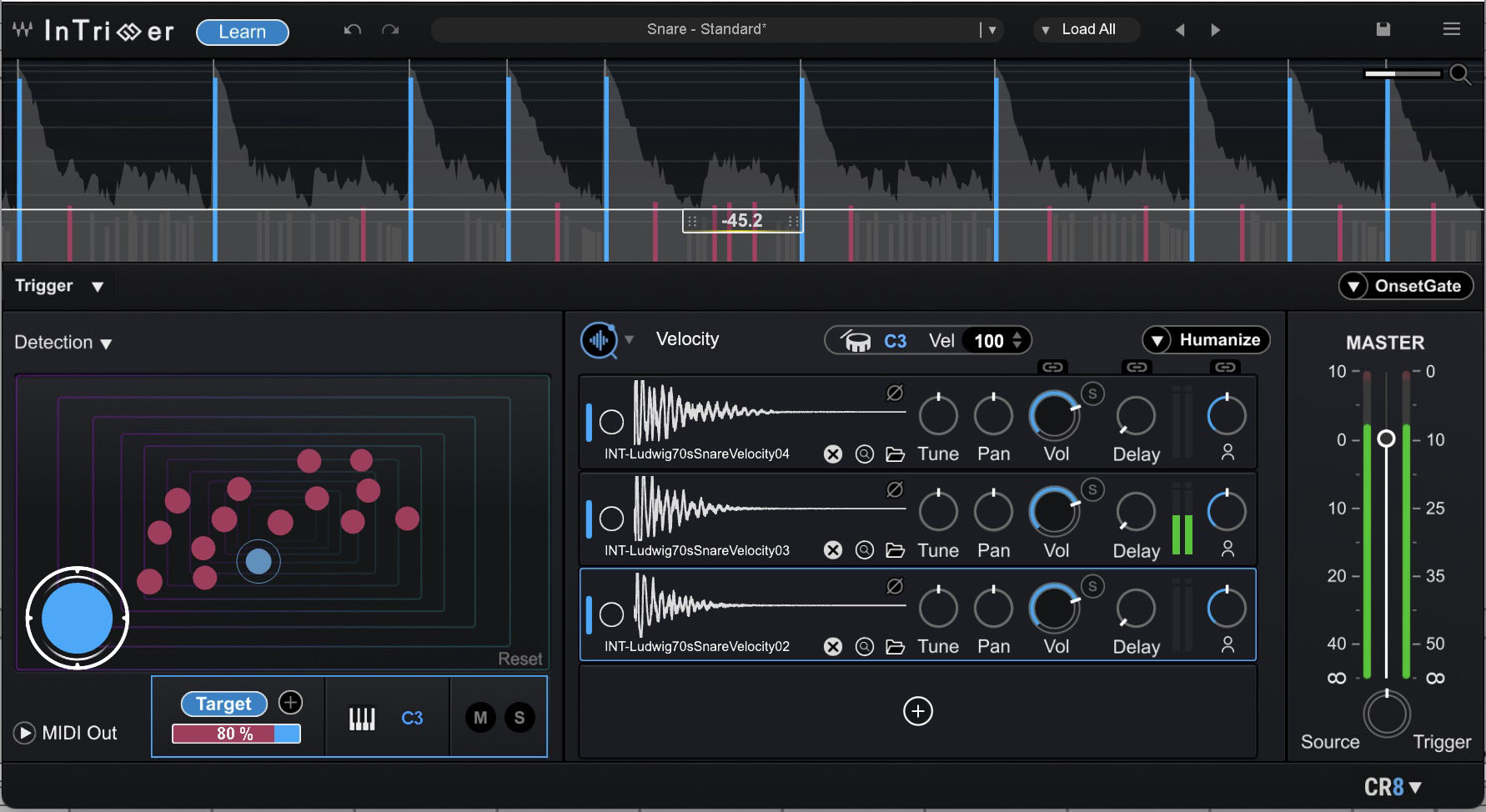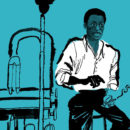By Jonathan Widran and Jessica Taylor
As Gustavo Dudamel’s long tenure as Music & Artistic Director of the LA Phil enters its final year, anticipation was high during the Hollywood Bowl’s Forever Summer schedule for his first appearances as conductor in early August. This meant July was a grand opportunity for the city’s classical music fans to experience the grandeur, grace and adventurous excitement of guest conductors from various countries across the globe, who brought their unique styles and cultural aesthetics to lead the orchestra through the enduring works of many beloved composers. These include Carlos Miguel Prieto, a Mexican conductor making his second appearance at the Bowl (after last year’s Ballet Folklórico de México) leading the annual audience favorite Tchaikovsky Spectacular with Fireworks and Tabita Berglund from Norway, making her debut with the LA Phil for a program of Brahms & Grieg.
Starting with the lighthearted and lilting, Rome-inspired 15-minute fantasy for orchestra “Capriccio Italien Op. 45,” the multi-faceted Tchaikovsky program presented a high contrast in dynamics between the sweet, graceful and timeless storytelling of Swan Lake (featuring members of the San Francisco Ballet) and the familiar boisterous crescendo of the closing 1812 Overture. During this segment, the LA Phil was joined by the USC Trojan Marching Band as the vibrant fireworks display lit up the sky behind the band shell. Conducting these works, Prieto showcased the range of his refined and sophisticated artistry, also allowing us to feel the joy and passion of his heritage.
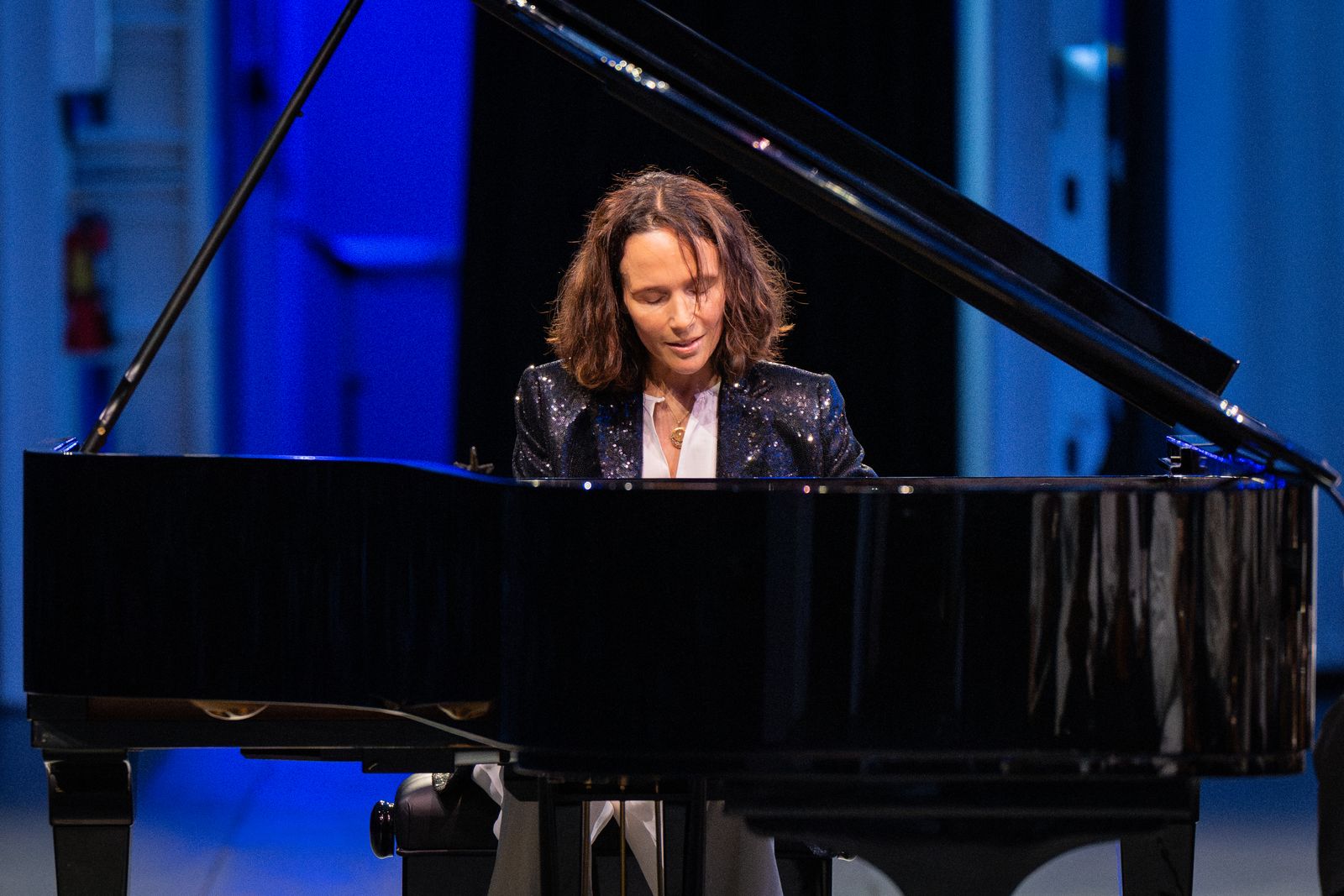
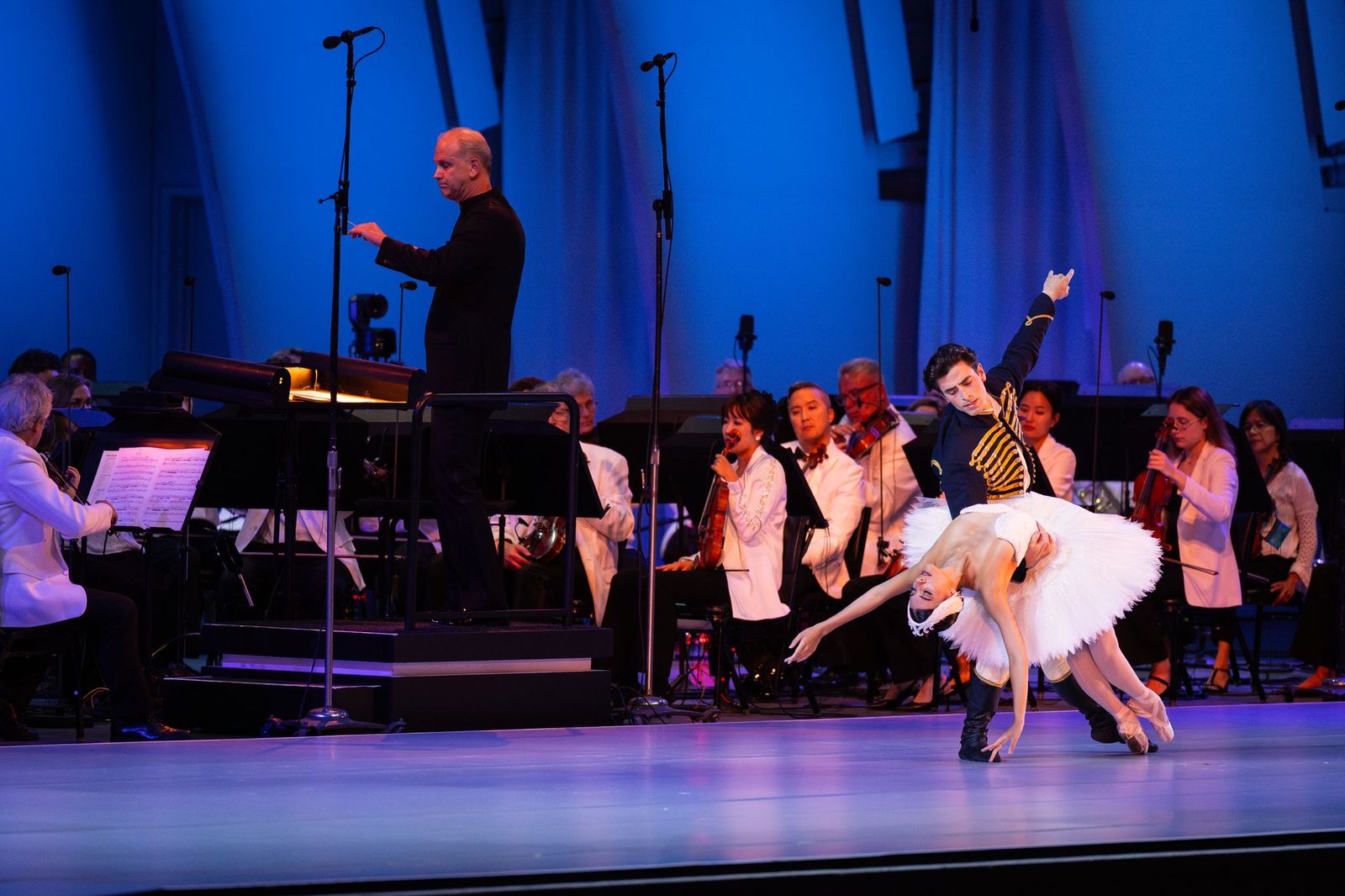
As much as the crowd anticipates and loves the fireworks, nothing on this night was as magical and uplifting as the opportunity to experience the fluid, dreamlike interplay between the LA Phil and the SF Ballet as they presented three of the most compelling segments of Swan Lake – the White Swan Pas de Deux, Act II, Black Swan Pas de Deux Act III and Dance of the Cygnets, Act III. In the Pas de Deux (a dance for two), the male dancer showcases the beautiful ballerina, making her look light and ethereal, particularly during the lifts and spinning pirouettes. He is strong but makes lifting her seem effortless, allowing her angelic nature to shine and making it appear she is floating through the air, then assisting her as she lands with perfection.
The White Swan, the female lead of the ballet symbolizing good, danced with grace and heavenly beauty, transcending to the magnificence of a swan with solo harp accompaniment. Her male counterpart was the prince falling in love with the princess who had been transformed into the white swan. A gentle violin accompanied them as they danced together. In the second Pas de Deux, the Black Swan, representing evil, used her stylish moves to try to trick the prince and make him fall in love with her instead. Contrasting with the gentle movements of the White Swan, the Black Swan’s dramatic dance, full of jumps and turns, reflected her demands for more of the prince’s attention. The orchestra’s blend of softly charming passages and more emphatic, percussive strings perfectly reflected the seduction.
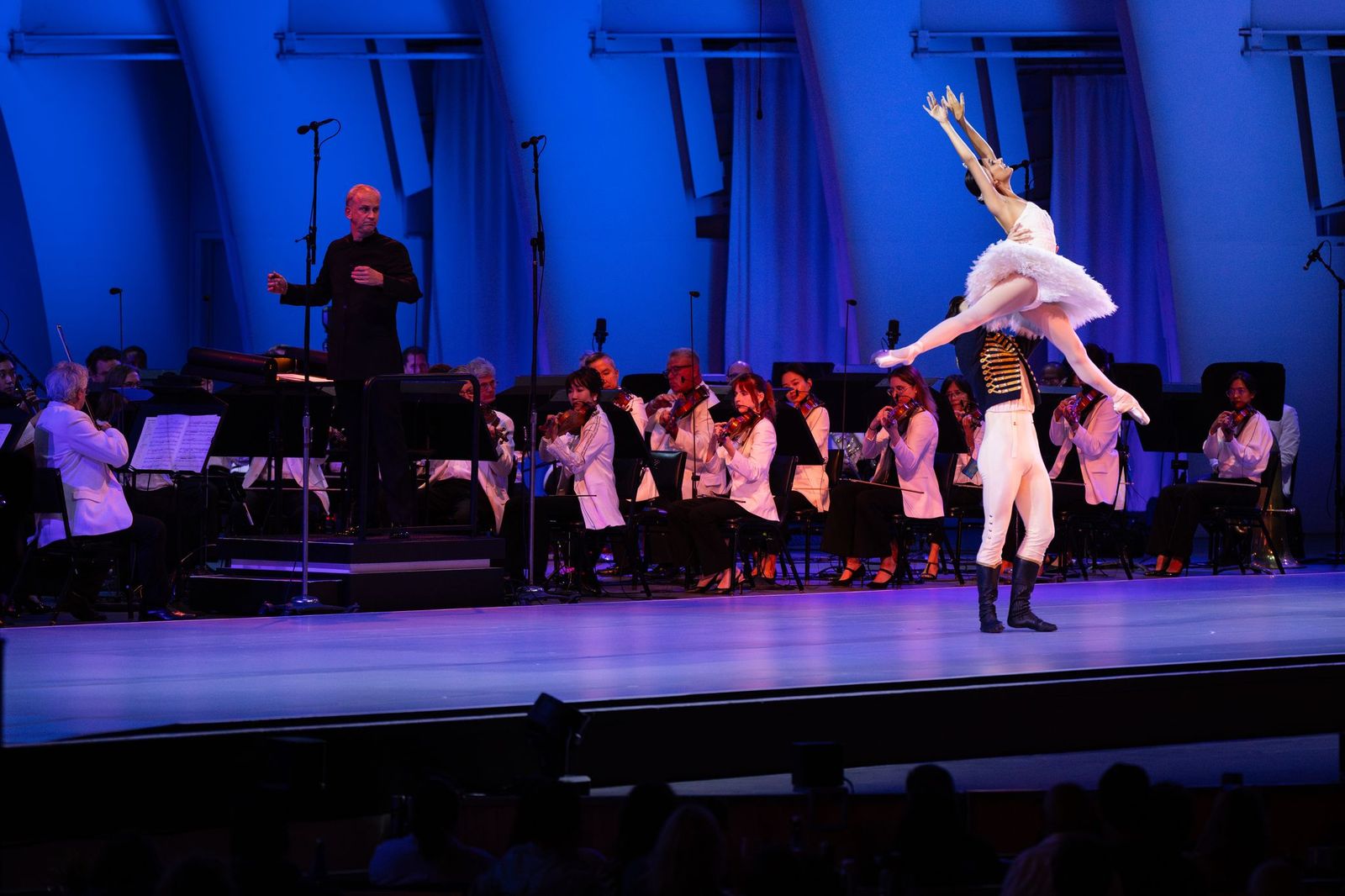
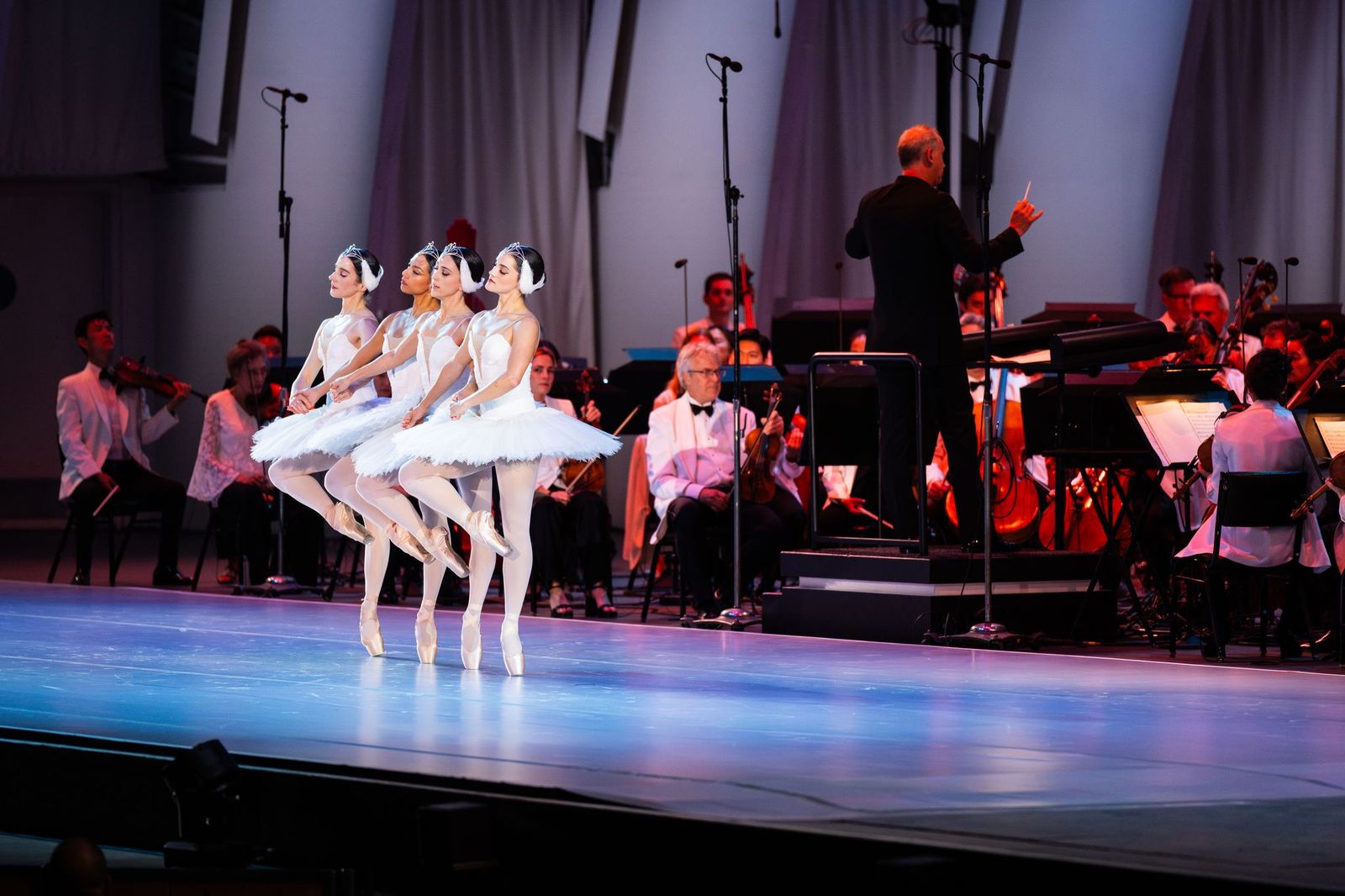
It's likely that no other dancer or athlete can display elegance in motion as well as ballerinas performing Swan Lake, a notion most perfectly displayed on one of the ballet’s most renowned piece of choreography, “Dance of the Cygnets.” In synch with the high spirits and great whimsy of the orchestra, it featured four ballerinas (white swans) dancing together in unison, breathtakingly imitating the way petite swans huddle and move together with perfection for protection. The swimming effect created as they danced across the stage hid the hard work it takes to move in such perfect synch, much like we don’t see the intense movement of a swan’s legs under the water because they make it look so smooth on the surface. The need for the precise timing between the music and the cygnets’ movements was so great that Prieto would often look over his shoulder to make sure the orchestra was on point with them.
While perhaps not the marquee event the Tchaikovsky Spectacular was, the Bowl’s presentation a few nights earlier of Brahms’ Piano Concerto No. 1 in D Minor Op. 15 (the composer’s first performed orchestral work) and Grieg’s Peer Gynt was majestic and inspiring in its own special way. Besides the opportunity to hear these grandeur-filled works, perhaps the greatest revelations of the night were the elated and elegant conducting of the exuberant, internationally acclaimed Norwegian Tabita Berglund and the stunning, flawless and richly complex playing of French piano virtuoso Hélène Grimaud. Bringing much needed, insightful and intuitive feminine energy to a realm whose roles are traditionally filled by male conductors and soloists, Berglund and Grimaud regaled the audience with alternating moments of both softness and extreme intensity as they shared the ageless classical wonder of Brahm’s three movement concerto.
Not surprisingly, the highlight of the post-intermission presentation of Peer Gynt was its most famous piece, “Morning Mood,” which Grieg composed to depict the rising of the sun in the Moroccan desert in Act 4 of Henrik Ibsen’s play (also named Peer Gynt). Beginning with subtle clarinets, flutes and a single lyrical oboe, it built on a symphony of multiple violins, which often convey a more solemn feeling, but here were extraordinarily uplifting, like seeing the first sunrise after God created his beautiful earth.
Photo credits: Elizabeth Asher, courtesy of the LA Phil.

